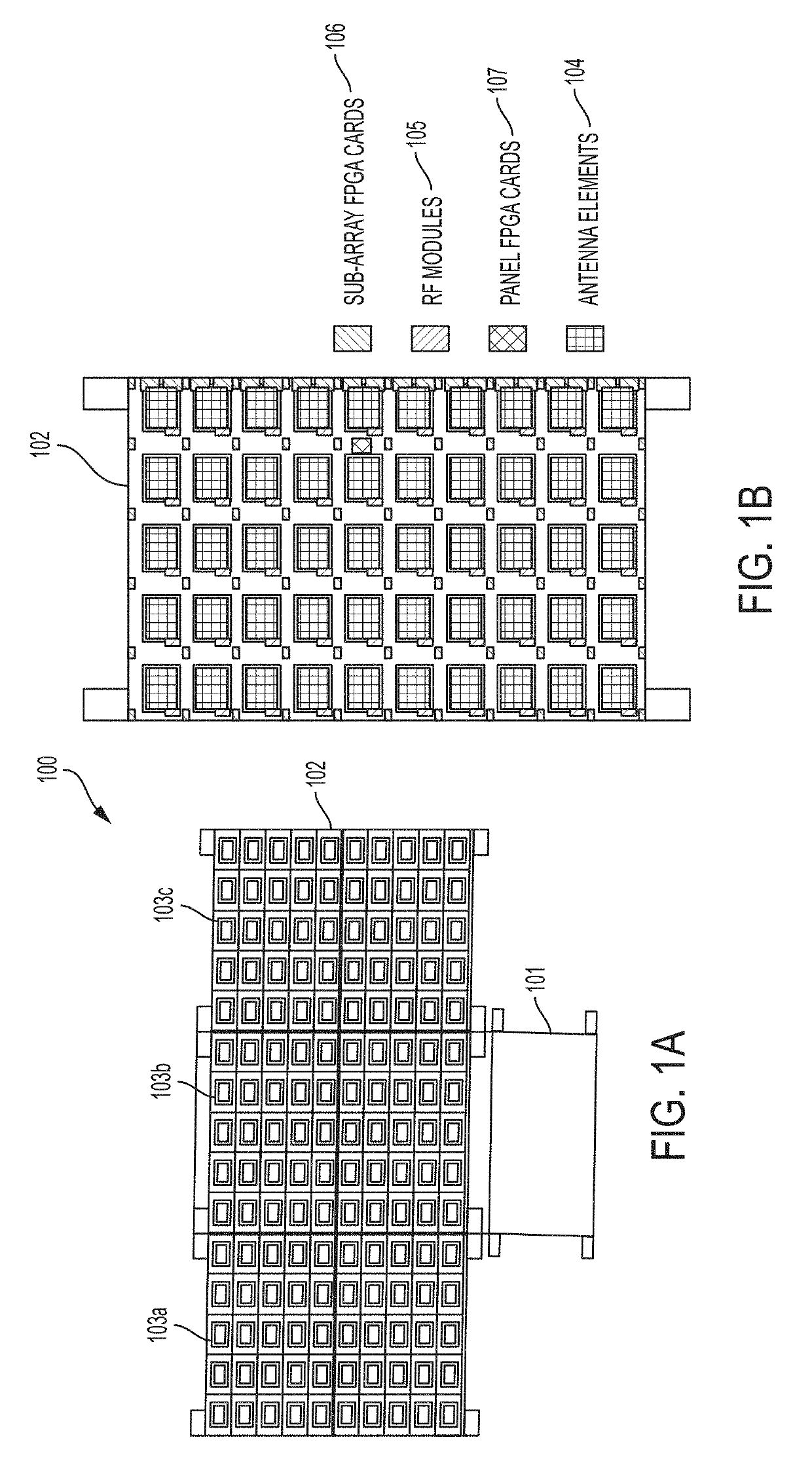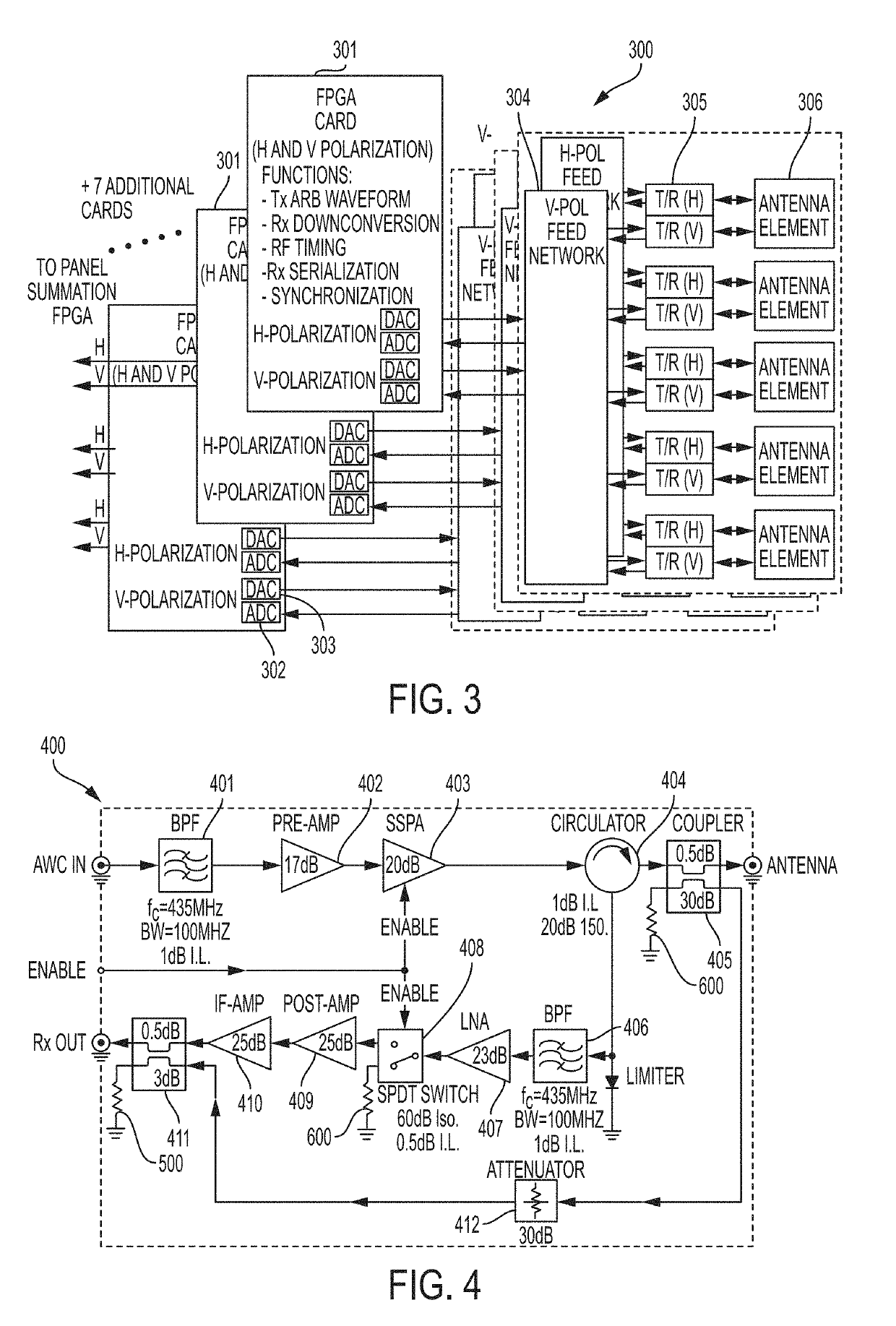Spaceborne synthetic aperture radar system and method
a technology of synthetic aperture radar and spaceborne, applied in the field of advanced spaceborne synthetic aperture radar (sar) system and method, can solve the problems of limited coverage and capability, high development cost, etc., and achieve the effect of removing timing disturbances and ambiguities
- Summary
- Abstract
- Description
- Claims
- Application Information
AI Technical Summary
Benefits of technology
Problems solved by technology
Method used
Image
Examples
Embodiment Construction
[0043]The present invention relates to an advanced spaceborne Synthetic Aperture Radar (SAR) system and method that can provide high resolution measurements of the Earth or planetary surface, overcoming limitations in conventional SAR systems, and reduce development costs. The present invention enables feasible and affordable spaceborne instruments that meet or exceed science needs by the science and commercial remote sensing community. The architecture of the present invention incorporates advancements in radar technology and techniques making this radar capable of imaging modes not possible with conventional radars.
[0044]The present invention is applicable to a number of science and commercial applications areas including the measurement of ecosystem structure and extent, surface and sub-surface topography, soil freeze-thaw, ice sheet composition and extent, glacier depth, and surface water, among many others.
[0045]The present invention is directed to improving spaceborne SAR syst...
PUM
 Login to View More
Login to View More Abstract
Description
Claims
Application Information
 Login to View More
Login to View More - R&D
- Intellectual Property
- Life Sciences
- Materials
- Tech Scout
- Unparalleled Data Quality
- Higher Quality Content
- 60% Fewer Hallucinations
Browse by: Latest US Patents, China's latest patents, Technical Efficacy Thesaurus, Application Domain, Technology Topic, Popular Technical Reports.
© 2025 PatSnap. All rights reserved.Legal|Privacy policy|Modern Slavery Act Transparency Statement|Sitemap|About US| Contact US: help@patsnap.com



